This blog series (this is Part V) is designed to help you become more familiar and comfortable with Dimension Types and Analytical Dimensions in Sage X3. There is great information in the Online help center. Your business partners and Sage Professional Service consultants are your resources for setup design and strategy.
In Parts I to IV, we’ve reviewed setting up Dimension Types and Analytical Dimensions, adding them to modules, making them mandatory and adding restriction codes. We have the Dimension Types and Analytical Dimensions ready to use and are testing. One question that pops up is “Why doesn’t my Dimension value change when the field it is dependent on changes?”
Example: Sales order
We’ll start with the Sales Order Default dimension (SOH) for Dimension Type Cost Center set to use Sales Rep under Setup, Financials, Accounting interface.
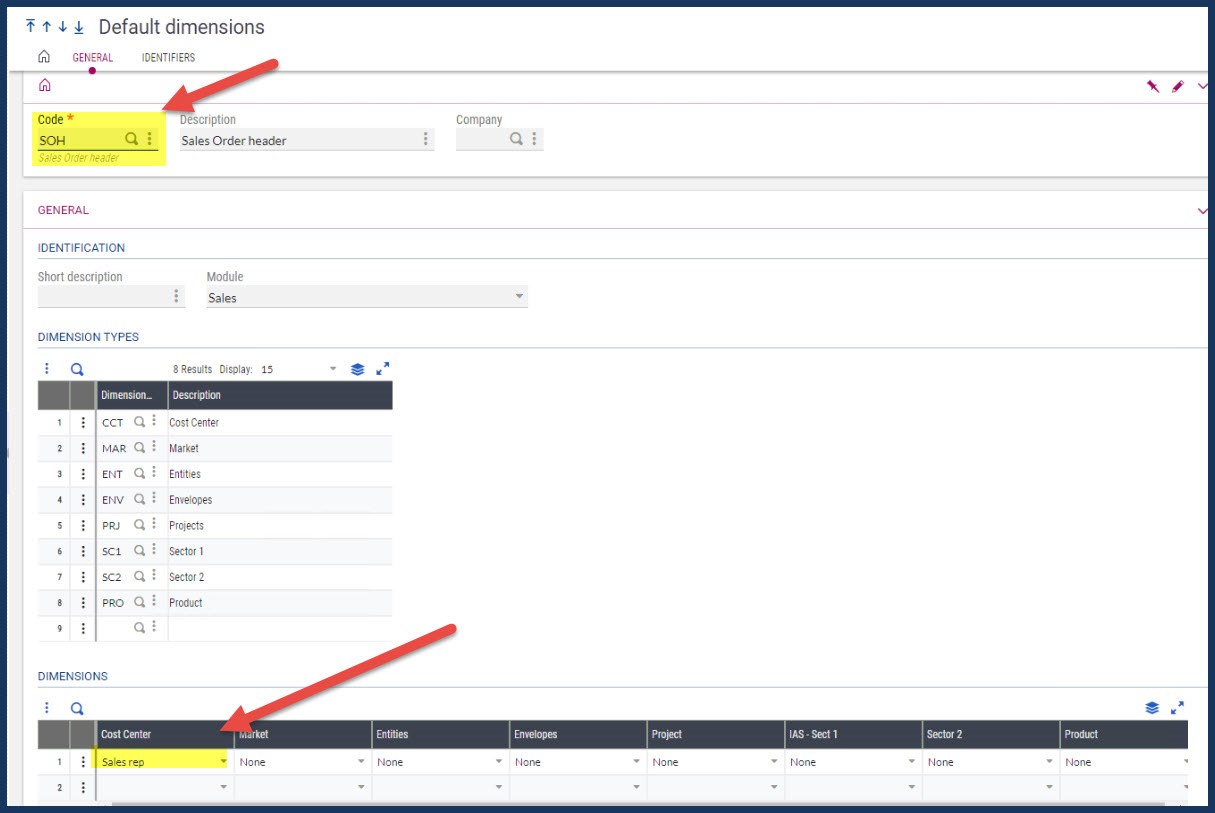
Under Common data, BPs, Sales Rep, we’ll set the Analytical dimension for REP001 to PROD-CYC for Dimension type CCT. With this setting, the default dimension for the Sale Order will be dependent on the analytical dimension assigned to the Sales Rep that is associated with the customer.
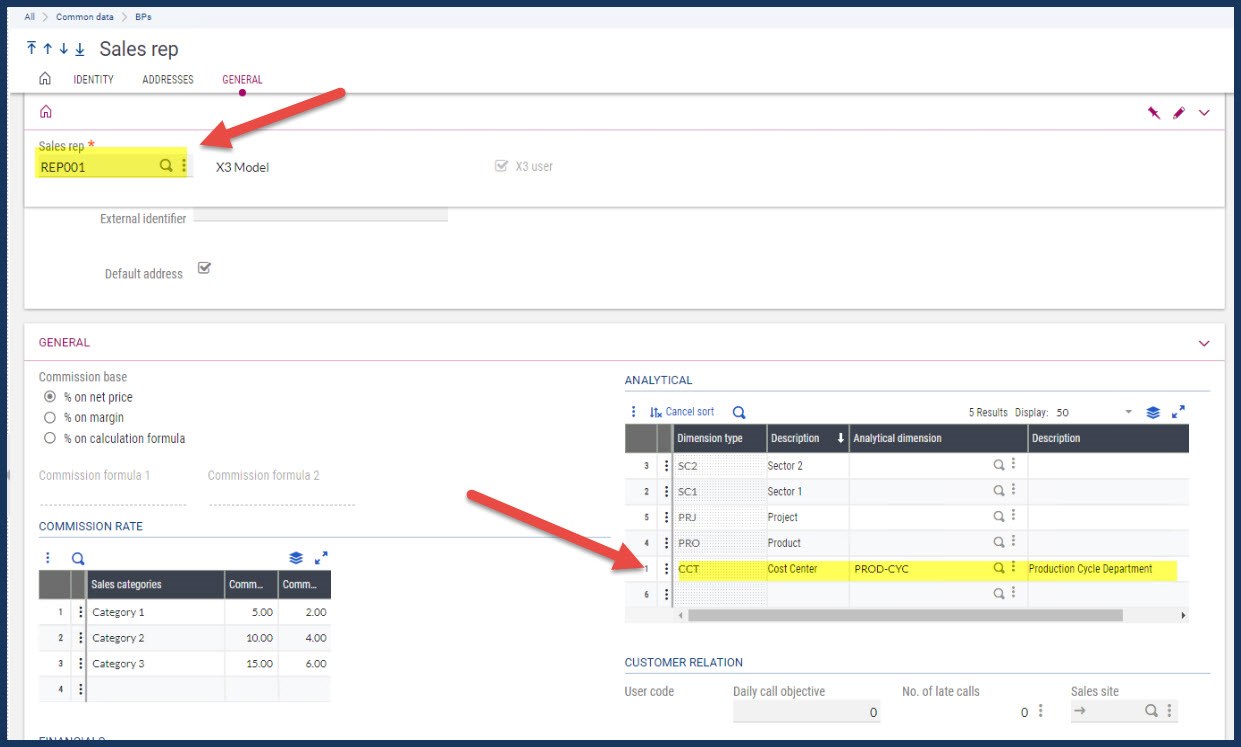
Next, we will set the Analytical dimension value on REP002 to QUAL-001
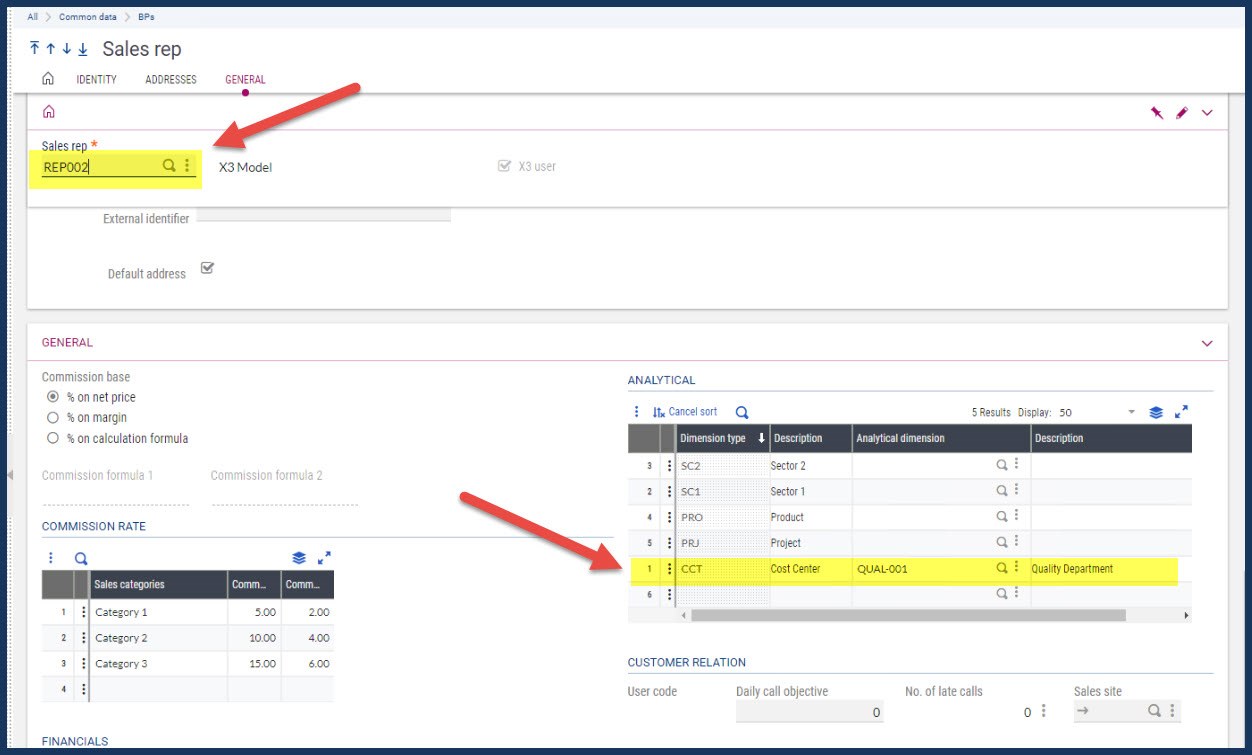
Now it’s off to the Ship-to Customer tab under Common data, BPs, Customer, to set the Sales Rep for Customer NA001 to REP001
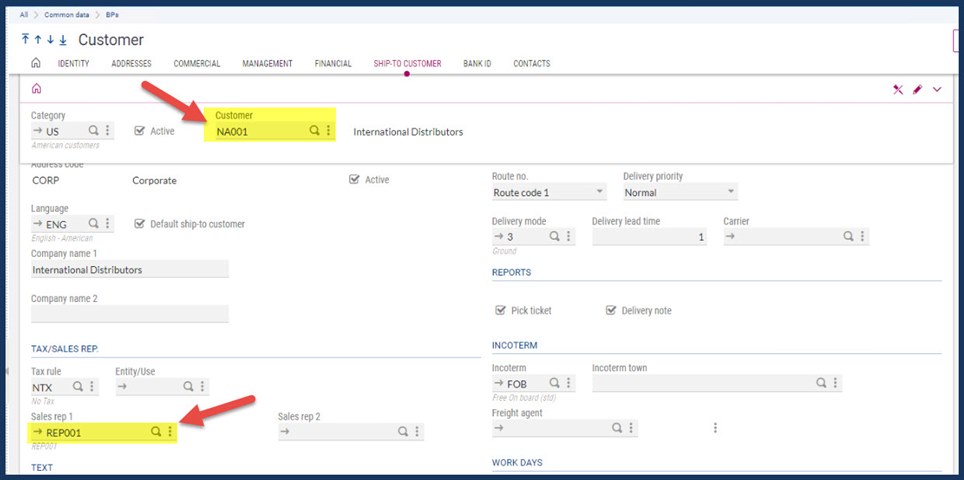
We create a Sale Order for NA001 under Sales, Orders. As expected, the Sales Rep is REP001 and the Analytical dimension value is PROD-CYC.
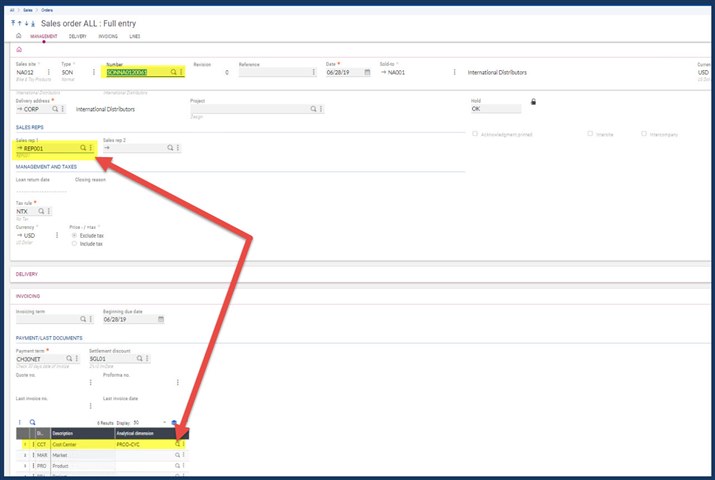
When we change the Sales Rep to REP002, the Analytical dimension value doesn’t change.
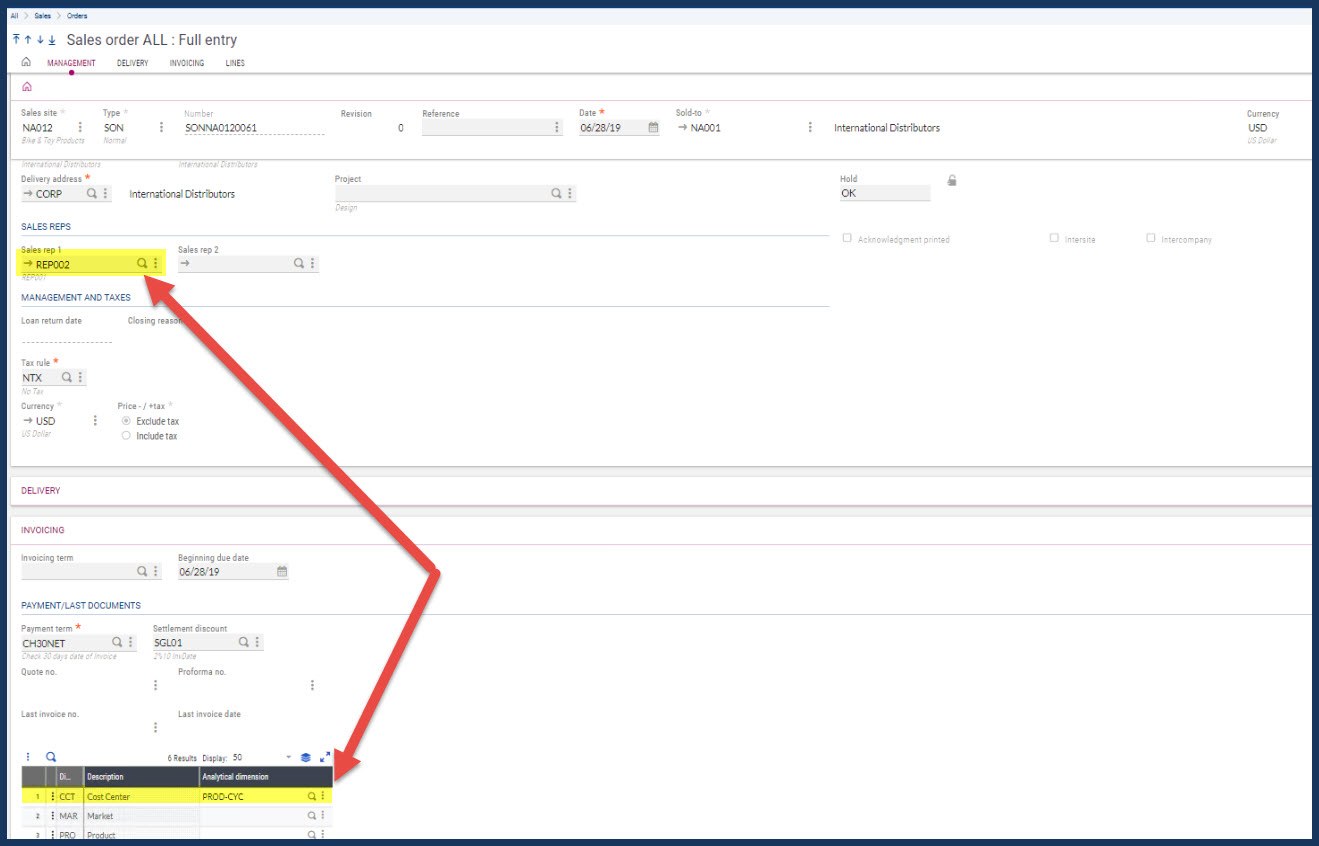
Why doesn’t the Analytical dimension value stay in sync with the Sales Rep? The Analytical dimensions values are initialized only one time. As soon as we tab off of the Sold-to field, the Sales Rep and the Analytical dimension values are populated and this is the “one” initialization for the dimension value. We can manually change the dimension value. With this structure, we can mix and match the Rep and the dimensions when desired.
What happens If the customer is not assigned a Sales Rep? In this instance, the initialized value is considered “blank” and we will have to manually key in the value for both the Sales Rep and the Analytical Dimension.
Speak with your business partner or Sage Profession Services consultant to create a customization if you wish to change how this functions.
Example: Purchase Order
For the Purchase order, we will set Default dimension (POH) for Dimension Type Cost Center set to use Buyer under Setup, Financials, Accounting interface
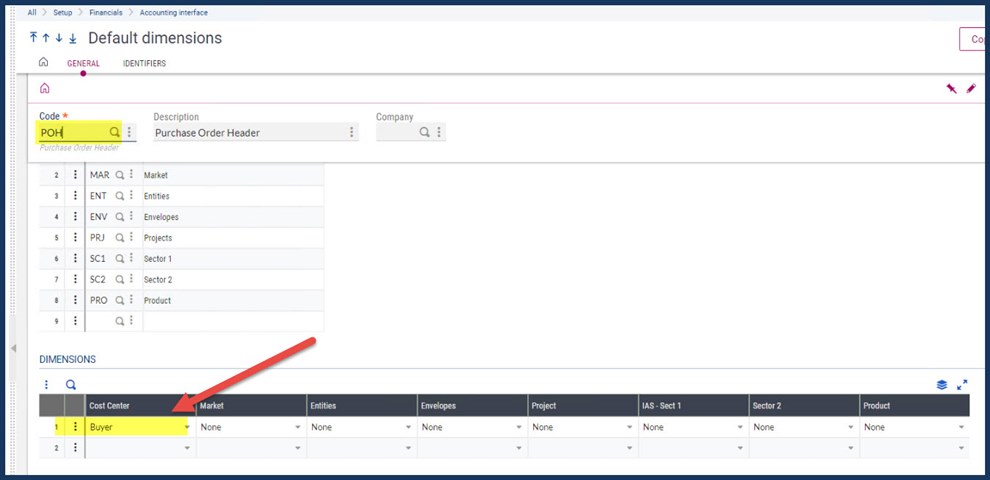
The Analytical dimensions for the buyers are set on the Account tab under Setup, Users, Users. We will assign ENG-001 to user ERP.
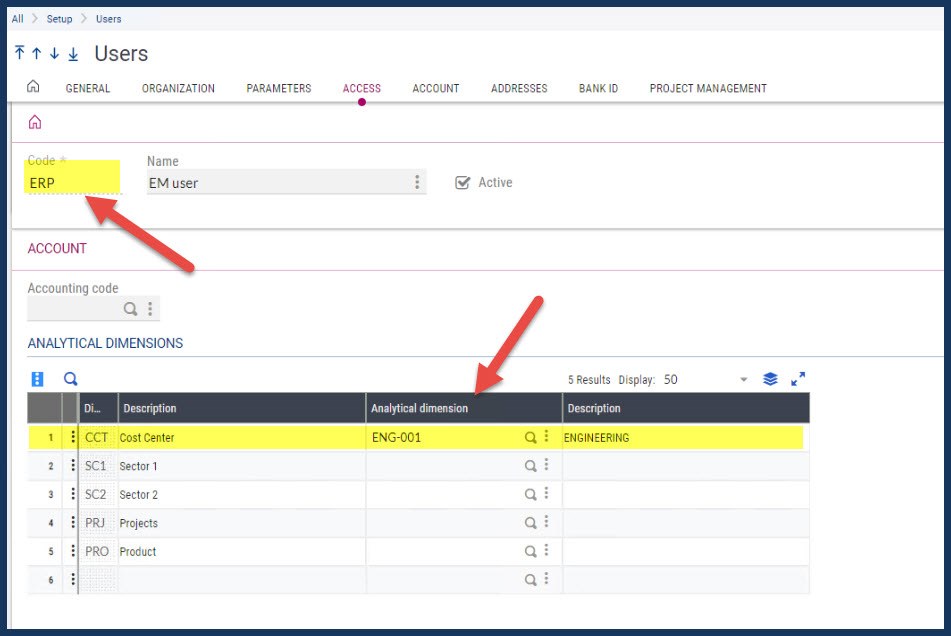
We will assign GENE-001 to the ADMIN user.
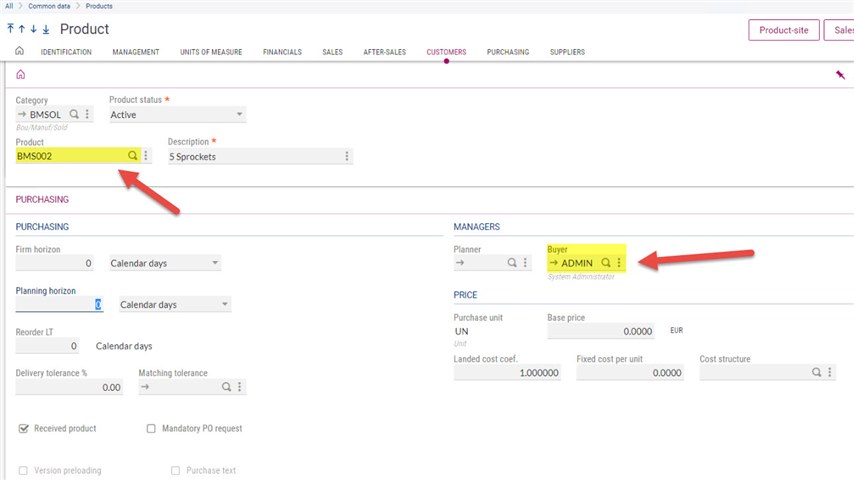
We will logon as ADMIN and this will be the default Buyer when we create a Purchase Order under Purchasing, Orders. The Analytical dimension populates with ADMIN’s dimension of GENE-001 as expected.
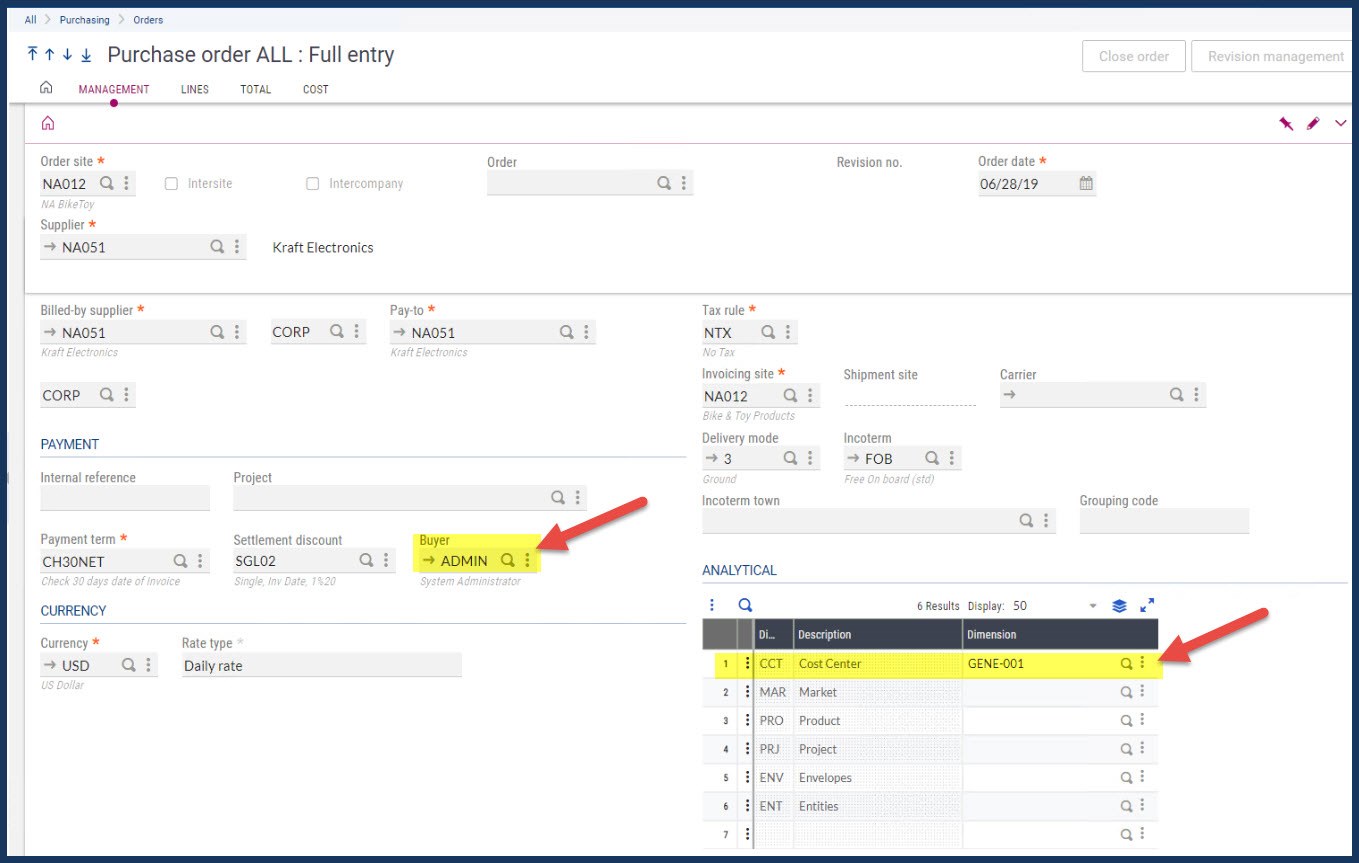
The PO header has been initialized with ADMIN’s value and just as with the Sales Order, it is only initialized one time. If we change the Buyer to ERP, the Dimension value will not change.
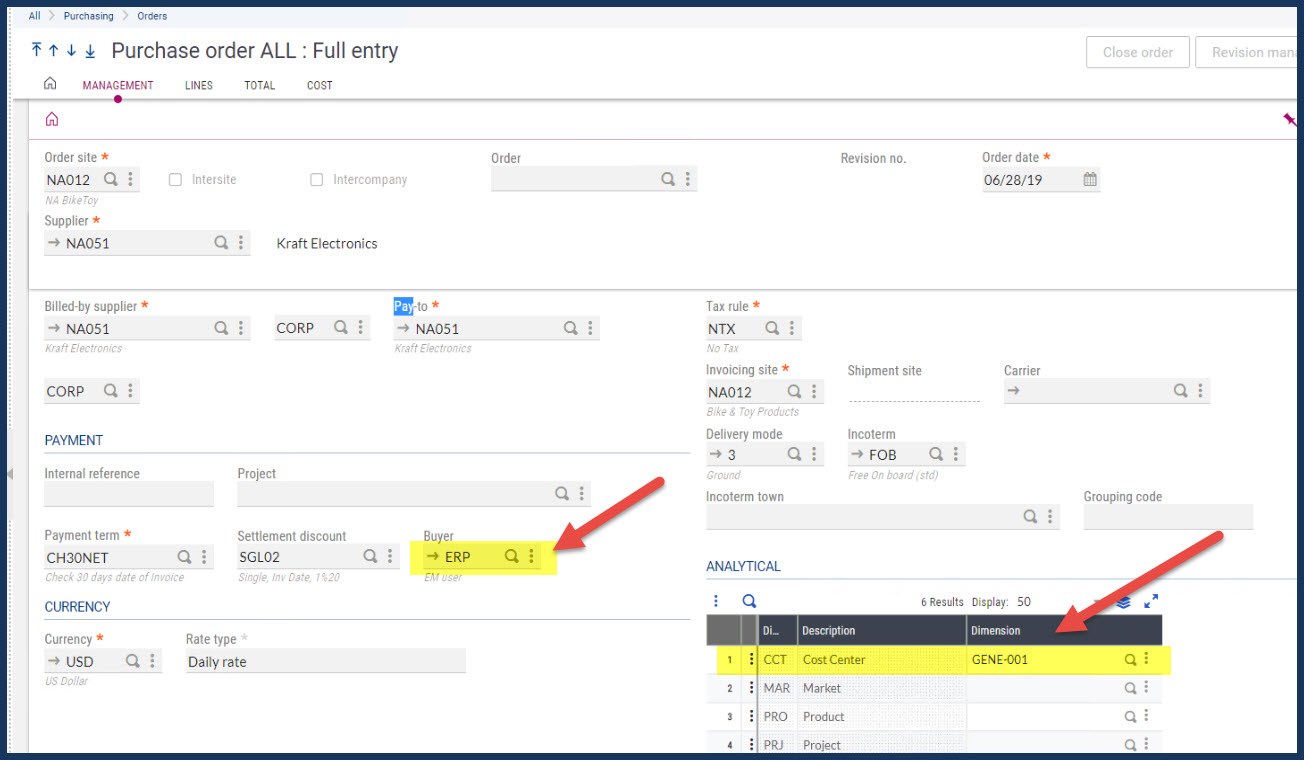
Again, by not forcing the Buyer and Dimension to stay in sync, we have the opportunity to mix and match the Buyer and the Dimension values as needed. Check with your business partner or Sage Professional Services if you are interested in changing the functionality.
Other:
These are just two examples of the “one time” initialization of dimensions. You will see similar behavior in the General Ledger.
Dimension Tip:
In my examples, I have only been entering one line in the Dimensions grid under Setup, Financials, Accounting interface. You can enter a secondary values so if the Sales Rep or Product or Customer, etc. doesn't have a value, the program can grab the next line. Some consultants fill the last line with Site in case someone forgets when setting up a new product, customer, etc. This assumes that sites aren't created all that often and site will have a value.

